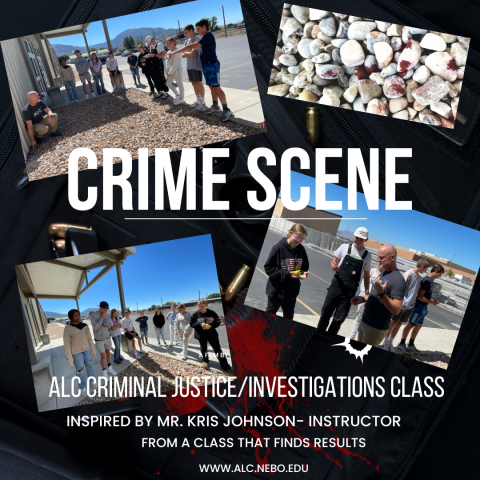
The Criminal Justice/ Investigations class had a fun and interesting activity last week.
For the activity the students were introduced to a small crime scene in which the students had to find pieces of evidence.
Some information concerning crimes scenes are as follows:
Police actions at a crime scene fall into four categories: safety issues, preserving the crime scene, collecting evidence, and documenting the situation. There are a lot of things that are critically important must be completed in the early minutes of the crime response.
The first person to arrive—often a patrol officer—must assess the situation and act quickly. One priority is assessing the need for medical assistance and arranging for medical help. Another is calling for assistance—usually a crime response team and additional officers. A third priority is protecting the evidence at the crime scene. The fourth is issuing information if a suspect is still at large—especially urgent if there’s a threat to public safety.
In the critical first moments, caution is essential. Even if the scene looks quiet, assume the crime is still in progress. Do not take unnecessary risks. Officers should also be aware that curiosity seekers who might compromise important evidence. It’s also important to realize that bystanders may be paying close attention to your actions and demeanor.
Here are some practical guidelines for responding to a crime scene:
- Safety issues
Even a crime scene that seems quiet and routine may harbor dangers:
- Proceed cautiously until you’re sure the location is safe.
- Assess any victims and call for medical assistance if needed.
- Issue a description of the suspect if there’s danger to the public.
- Be aware of potential hazards, such as pathogens, gasoline, and drugs.
- Use safe procedures when dealing with biological samples.
The students learned a lot about crime scenes, and how to examine the evidence they found. Among the evidence was blood spatter, bullet casings, hair, and other items of possible evidentiary value.
I am sure this is was a learning activity the students will not forget for a long time. Thank You Mr. Johnson.
#ALCBeCurious #ALC #ExploreDiscoverCreate #NeboSchoolDistrict #EngageStudents
#TheClimb #NeboHero #NeboSchoolDistrict #StudentSuccess #EmpowerStudents #EngageStudents #FocusOnStudents #LoveUTpublicSchools #UtPol #UtEd #ThankATeacher #LoveTeaching
